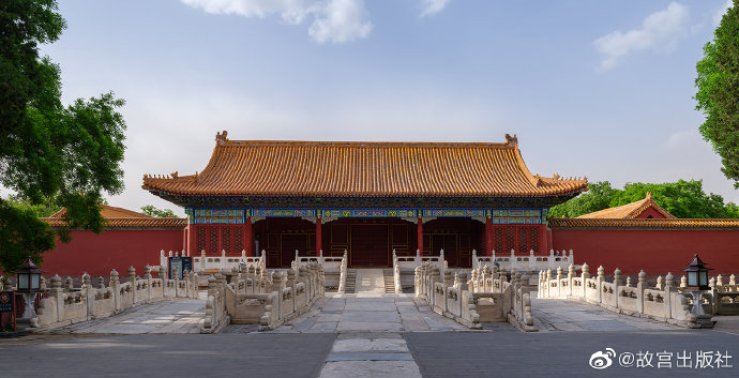In this year’s 2020, the second decade from the turn of the century in Beijing the Capital of China also the People’s Republic of China, in which is also the year of the rat, marking its six hundred years anniversary of the Forbidden city that marks the transitional point of in between the middle of the Ming Dynasty (1368- 1644) transitionally from Nanjing to Beijing towards the Qing Dynasty (1636-1644-1911) …. The Imperial Palace seen so many countless seasonally transitional equinoxes but further its six hundred years is iconic, but it’s five hundred ninety nine years it marks it Autumn Equinox…. In which it only took twelve years to build the same of the Daming Palace of The Tang Dynasty Xian Imperial Capital only it was least twenty times larger……
武英殿The Hall of Martial Valor (Wuying dian) is the main building in an architectural compound that lies to the far west of the Hall of Supreme Harmony (Taihe dian).
In the Ming dynasty (1368-1644), the Hall of Martial Valor was the place where emperors went on a fast and receive ministers. It is also one of the studios for the Ming dynasty court painters. In the late Ming dynasty, the peasant rebellion troop broke into the imperial palace and burnt down many of the buildings. Remaining intact, the Hall of Martial Valor was the place where Li Zicheng (1606-1645), the peasant unrest leader, ascended the throne as the emperor before he hurriedly fled from Beijing. After the Manchu Qing regime moved its capital to Beijing to rule across China, the hall became the office for Dorgon (1612-1650), one of the four regents, for handling state business. In the early Qing dynasty (1644-1911), emperors also attended small-sized ceremonies here. From Kangxi reign (1662-1722) on, the Hall of Martial Valor became an imperial cultural center – a workshop for amending, compiling, and printing books with carved wooden blocks. Books printed here were marked with the authoritative “Hall edition”.
武英殿Wuying Hall echoes the Wenhua Hall. At the end of the Ming Dynasty, Li Zicheng ascended to the throne and proclaimed emperor here; in the first year of Shunzhi in the Qing Dynasty, Dorgon, who was the first to enter the pass, was promoted here. During the reign of Kang Yong, Wu Yingdian set up a book-repairing office, which later became a specialized agency for publishing books.
In the late Qing Dynasty, Wuying Palace caught fire twice in the eighth year of Tongzhi (1869) and the twenty-seventh year of Guangxu (1991). For this reason, in the eighth year of Tongzhi and the twenty-eighth year of Guangxu (1902), Wuying Palace underwent two difficult reconstructions under the situation of internal and external troubles. The reconstruction project reflects the poverty and helplessness of the Qing court at that time, and also reminds us that fire prevention is the top priority of protecting the wooden structure of the Forbidden City….
【丹宸永固:紫禁城建成六百年图录——1902年:重建武英殿】紫禁城建成600年 悦读故宫# 武英殿作为外朝的重要建筑,与文华殿遥相呼应。明末,李自成在此登基称帝;清顺治元年,率先挥师 入关的多尔衮于此升座。康雍年间,武英殿设立修书处,后正式成为刊刻书籍的专门机构。
清末,武英殿于同治八年(1869年)、光绪二十七年(1 9 0 1年)两次失火。为此,同治八年、光绪二十八年(1902年),武英殿在内忧外患的局势之下进行了两次艰难的重建。重建工程反映出当时清廷的拮据与无奈,也提示我们:防火是保护紫禁城木结构建筑群的重中之重



